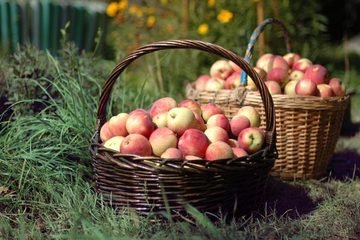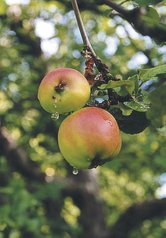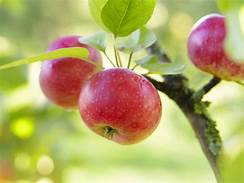Growing organic Apples

In my last post, I discussed the different places where you can buy your plants. Let us now look at how you can grow organic fruits and vegetables, starting with Apples.
If you plan on growing fruits or vegetables your soil needs thorough preparation such digging and turning and good nutrients before planting your seeds or establish plants. You should also understand the required needs of each fruit that you intend to grow. Autumn is the best time to plant new trees. If you visit your local garden centre that specialises in organic plants when they are clearing out summer stocks, you can get good deals on trees such as apple, plums, pears and many others at a much cheaper price. These trees will also be going into winter dormancy resting for the winter and then come to life in the spring. As an amateur it is best to start with fruits that are easy to grow and maintain, such as apples, plums and strawberries.

Apples
Apples are probably the easiest fruit tree to grow and the most popular with experience gardeners as well as amateurs. Apples mainly fall into two categories: dessert apples for eating and cookers for cooking. Some are dual-purpose, so suitable for both uses. You must decide whether you wish to grow your apple trees in containers or directly in the ground. You should also choose an area in your garden that gets plenty sunlight and where possible plant two different varieties to ensure cross-pollination and species that is less susceptible to disease.
If you lack space in your garden find an apple tree that self-pollinate. If you only have space for one tree you should consider buying a dwarf or semi-dwarf variety.

Planting Your Apple Tree in the Garden
When planting your apple tree in the garden, make a hole no deeper than the roots, but about three times the width of the root system. In order to measure the width, spread the roots of the plant before digging and that way you will know the full width of your plant before planting.
Once you have dug the required hole, put your plant in the hole and carefully fill the soil around the roots ensuring there are no air pockets. Then gently firm the soil around your plant. Again, you should also follow the instructions that comes with your plant. You should also choose an area in your garden that gets plenty sunlight and as mentioned before, where possible plant two different varieties of apple trees in your garden which will ensure cross-pollination. If this is not possible again consider planting dwarf or semi-dwarf variety.

Growing Your Apple Trees In containers
If you decide to grow your Apple tree in a container, you must choose one that has been specially grown for a container because Apple trees are not grown on their own roots. The top of the tree is grafted onto different roots and the roots will control the size of the tree. Your container should be about 18-20 cm in diameter. Line the bottom of the container with pieces of broken polystyrene of or pebbles to retain moisture then use quality compost to fill your pot. Also, follow the instructions that come with your plant.

Feeding and Watering Your Apple Tree
After planting your trees, there is no need to feed them during the dormant season. Early spring is the best time to consider feeding your plant, but you need to remember that if you are growing organic apples you cannot use chemical fertilizer unless it is organic fertilizer because your plants will no longer be organic if you do.
Experience gardeners have use organic fertilizer such as Grow More to assist with growth and development of their plants. Or you can apply some organic compost on top of the soil after you’ve finished planting the tree but take care that the compost does not touch the tree trunk because this may invite bacteria and rot due to moisture on the tree trunk.
Once your trees are established, apples require very little care throughout the year. You just need to ensure that you water your trees regularly during dry spells and when the fruits begin to develop, especially if they are newly planted or in containers. Large established trees will be more resistant to periods of drought.
Further readings can be found on the following websites.
https://www.rhs.org.uk/advice/profilepid=33
https://www.gardeningknowhow.com/edible/fruits/